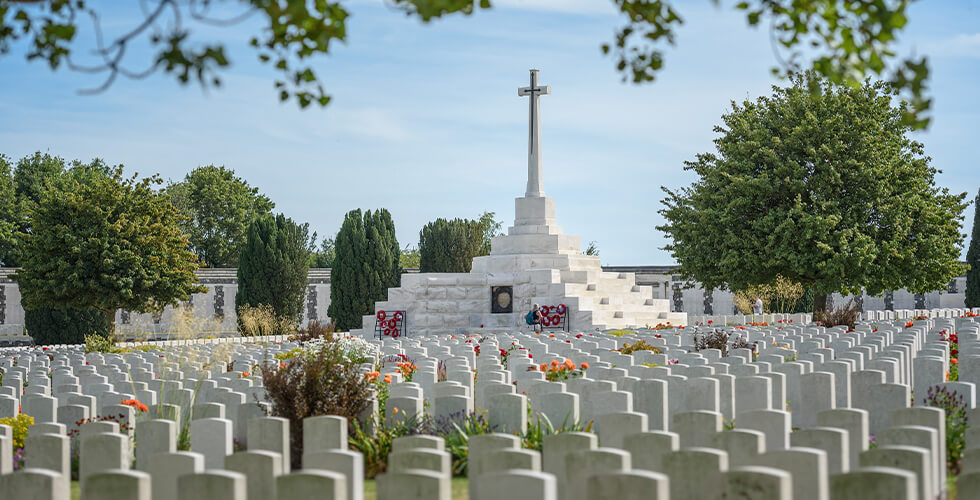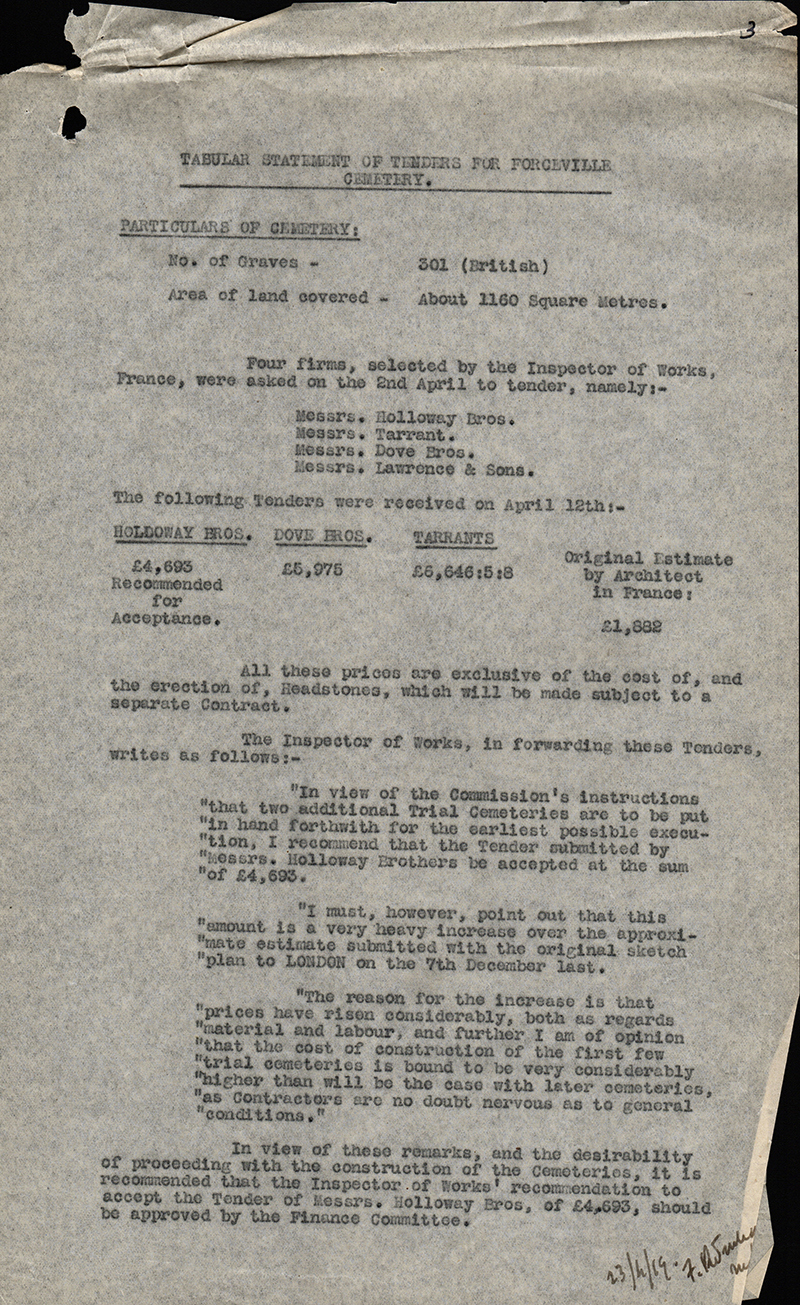17 July 2020
The First and Last CWGC Cemeteries
This year sees the 100th anniversary of the construction of the first CWGC cemetery in Forceville, and the 10th anniversary of the construction of the, as yet, last CWGC cemetery in Fromelles. So, we asked our Chief Archivist Andrew Fetherston & Official Historian George Hay to tell us the story of these two unique sites.
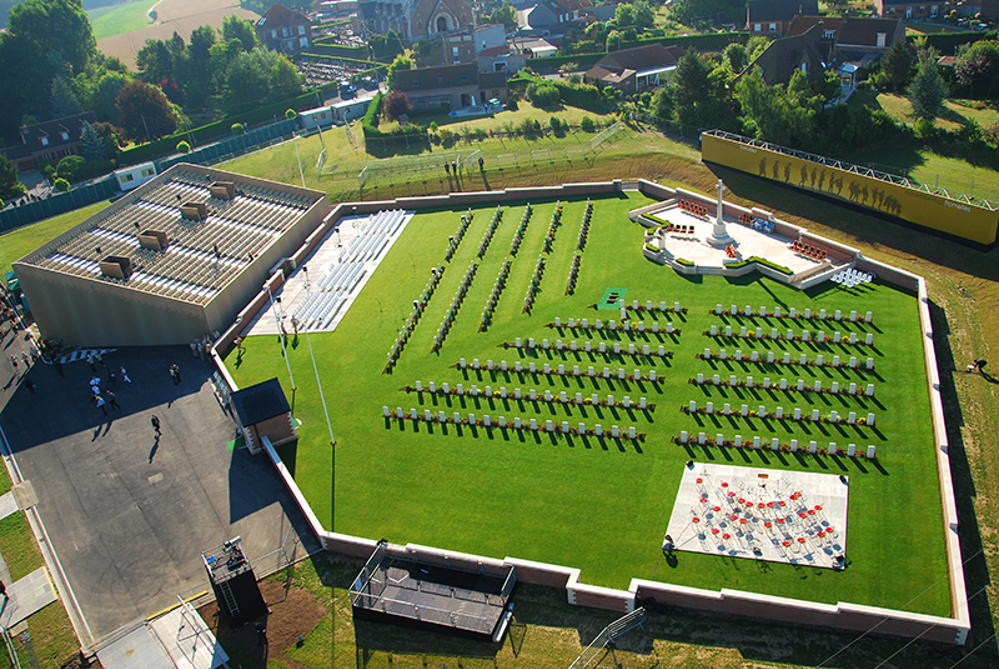
The First CWGC Cemetery
Forceville Communal Cemetery and Extension, in the Somme region of France, is a rather unprepossessing site. It is neither the largest nor, it is suggested, the most visually appealing of the hundreds of war cemeteries and memorials that were constructed by the CWGC after the First World War. Indeed, visitors to Forceville could perhaps be forgiven for comparing the site rather unfavourably against places such as Tyne Cot, Etaples and Cabaret Rouge. And yet this would do Forceville a great disservice, as those cemeteries all owe a debt to this pioneering site.
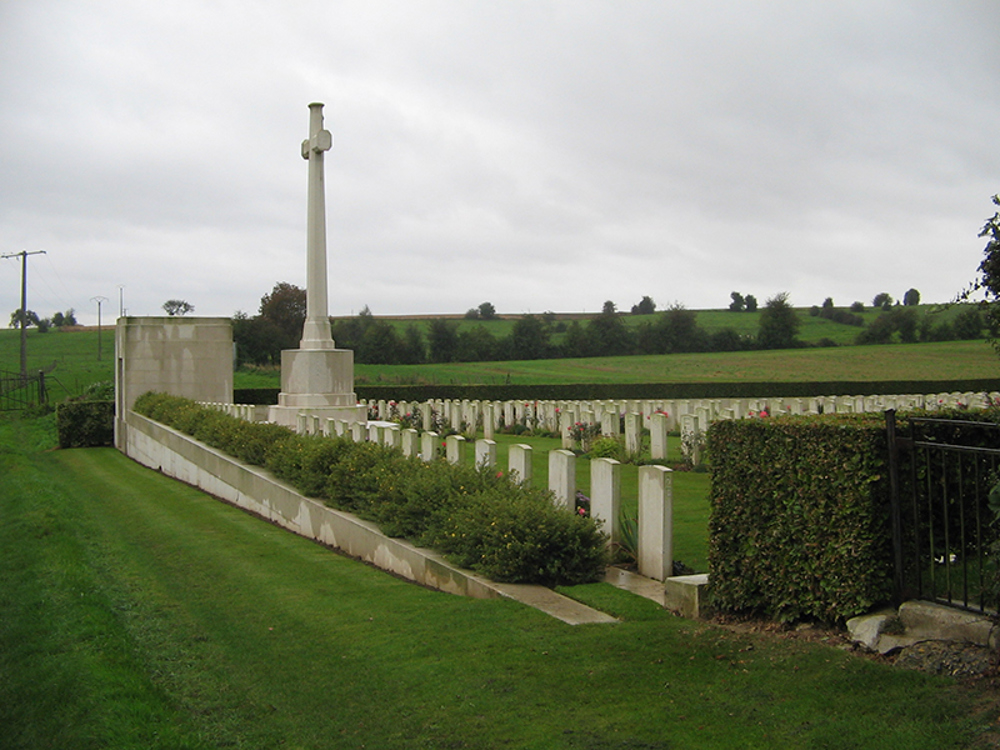
That Forceville would be the first constructed CWGC war cemetery was ‘not set in stone’. It’s true that from an early date it was earmarked to be one of the three experimental cemeteries (along with Louvencourt and Le Treport) which would be completed first.
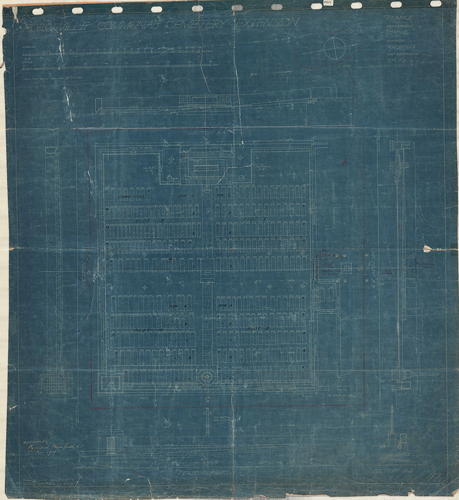
What is less well known is that this decision only came about after the Commission’s original plan, (which was to let each of the Principal Architects – Herbert Baker, Reginald Blomfield and Edwin Lutyens design one site each), was thrown into disarray in 1918 as the German spring offensive made certain areas, and the cemeteries within them, inaccessible. The revised plan saw Blomfield given the opportunity to design all three experimental sites.
But there is a question mark over just how much involvement Blomfield had with the design. War records in the archives of the CWGC suggest that it was another architect, Charles Holden, who would later become the fourth (and sometimes overlooked) Commission Principal Architect working in France and Belgium, who produced the original designs for Forceville.
It was likely that Blomfield’s role was to adjust and finalise the overall scheme, possibly in an attempt to bring down costs, and certainly later records in the archive list Blomfield as the main architect, with Holden relegated to a subsidiary role.
 Despite the rise in estimated costs, there was no going back on the construction work – indeed, for an organisation with a view to the long term, time was very much of the essence. On top of this there were many who remained unconvinced by the restrictions and stipulations being imposed on them regarding how they could commemorate their loved ones, and others who did not really believe that the Commission could carry out its monumental task.
Despite the rise in estimated costs, there was no going back on the construction work – indeed, for an organisation with a view to the long term, time was very much of the essence. On top of this there were many who remained unconvinced by the restrictions and stipulations being imposed on them regarding how they could commemorate their loved ones, and others who did not really believe that the Commission could carry out its monumental task.
So, our founder, Fabian Ware, who was a one-time newspaper editor, used his connections in the media to issue press notices setting out our plans. Rudyard Kipling, the Commission’s literary adviser, was also asked to produce a pamphlet entitled ‘The Graves of the Fallen’, to help put across the Commission’s ideas.
But what the Commission really needed was a finished, constructed cemetery. They believed that this was crucial to winning public support for their work. With the completion of Forceville the CWGC (or IWGC as it was then) no longer had intangible plans and proposals but a physical, substantial and permanent cemetery that could be visited and experienced.
In September 1920 the Times published an account of a visit to Forceville made by one of its correspondents, who described it as:
“The most perfect, the noblest, the most classically beautiful memorial that any loving heart or any proud nation could desire to their heroes fallen in a foreign land”
Forceville was the triumph that the CWGC needed, but not everything about the cemetery was a success. The costs had far exceeded the original estimates, and the Stone of Remembrance and Cross of Sacrifice are somewhat too large for the small site. But, together with Louvencourt and Le Treport, the lessons learned at Forceville would enable the Commission to complete the rest of its vast construction programme with confidence.
However, Forceville was but the first step of this process, one that reached a new landmark in 2010 with the construction of the first new CWGC cemetery for 50 years - Fromelles (Pheasant Wood) Military Cemetery.
The Last CWGC Cemetery
While Forceville was shaped by the destruction of the First World War, Fromelles was built in an altogether different atmosphere – not only during peace, but some 65 years after the end of another World War. In a powerful example of how the CWGC’s work is ongoing, this site was built to meet a specific and unique requirement: to provide a final resting place for hundreds of Commonwealth servicemen killed during the Battle of Fromelles in 1916, whose burial locations had, before 2008, been unmarked and unknown.

The village of Fromelles had formed part of the frontline for much of the First World War, but on 19 July 1916 it would bear witness to a costly and largely futile attack in support of the Somme offensive further south. A vastly outnumbered force of Australian and British units attacked a strongly fortified German frontline and, after very limited success, was forced to withdraw. By the following day, more than 1,500 British and 5,500 Australian soldiers were dead, wounded or missing, with many still lying out on the battlefield.
Prior to 2008 many of those killed during the Battle of Fromelles remained missing. However, more than 90 years later, a research team made up of Australian, British and French historians found documents in British and German archives that alluded to the burial of hundreds of British and Australian soldiers following the battle. Crucially, aerial photographs found at the Imperial War Museum hinted at a location for several burial pits: the edge of Pheasant Wood, near the village of Fromelles.
In 2008, an archaeological search of the area guided by these documents discovered six mass graves. Over the next two years, the bodies of 250 British and Australian soldiers – and more than 6,000 artefacts – were carefully recovered. Thorough examination and research saw a significant number of these men identified.
However, this remarkable discovery also presented a challenge. With no existing cemetery nearby with space for the burials, the CWGC needed to build its first new site in half a century.
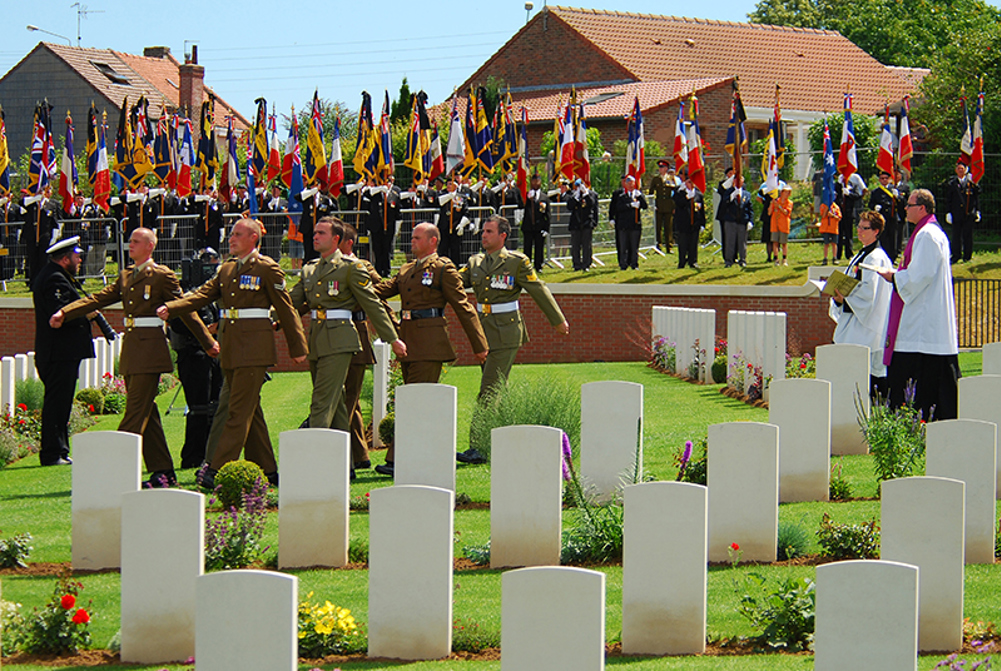
The team chosen to build the new cemetery at Fromelles in 2008 was led by CWGC Architect Barry Edwards MBE. Drawing on the rich design heritage of the CWGC’s historic estate, and thereby undeniably influenced by the early work at Forceville, they created a cemetery for the 21st Century.
Throughout February 2010, 250 of the soldiers recovered from the Pheasant Wood graves were laid to rest in the new cemetery at Fromelles. The last soldier recovered was buried during the dedication of the cemetery on 19 July 2010 – 94 years after the battle took place and ten years ago this Sunday.
As the first cemetery built by the CWGC in more than fifty years, Fromelles (Pheasant Wood) Military Cemetery demonstrates knowledge and experience garnered from a century of experimentation and learning that began at Forceville. It illustrates how history, science, tradition and technology can combine to create a fitting final resting place for these individuals, missing for almost one hundred years.
It is a place worthy of their sacrifice and its very existence not only speaks volumes of the human cost of war, but also of the CWGC’s ongoing commitment to those who gave their lives in the pursuit of peace.
